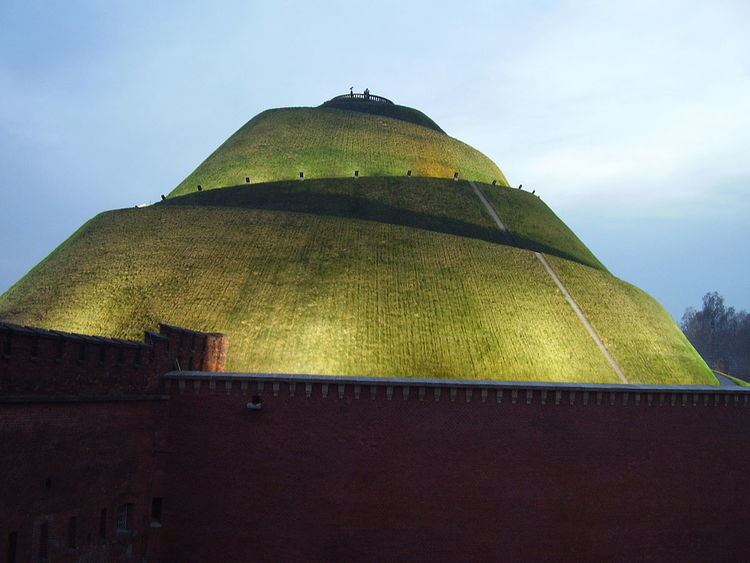Phone +48 12 425 11 16 | ||
 | ||
Similar Las Wolski, Piłsudski's Mound, Krakus Mound, Wawel, St Mary's Basilica - Kraków | ||
The ko ciuszko mound
Kościuszko Mound (Polish: kopiec Kościuszki) in Kraków, Poland, erected by Cracovians in commemoration of the Polish national leader Tadeusz Kościuszko, is an artificial mound modeled after Kraków's prehistoric mounds of Krak and Wanda. A serpentine path leads to the top, approx. 326 metres (1,070 ft) above sea level, with a panoramic view of the Vistula River and the city. It was completed in November 1823. The location selected for the monument was the natural Blessed Bronisława Hill (Polish: Wzgórze bł. Bronisławy), also known as Sikornik, situated in the western part of Kraków's Zwierzyniec District. It is one of Kraków's four mounds.
The construction was financed by donations from Poles living in all territories of Poland under foreign occupation. For three years beginning in 1820, people of all ages and class voluntarily constructed the Mound to the height of 34 metres (112 ft). Work was supervised by a Committee for the Construction of the Tadeusz Kościuszko Monument. At the base of the Mound, the Founding Act was deposited in a glass and marble case. At the top, a granite boulder, brought from the Tatra Mountains, was placed, bearing the inscription “Kościuszce” (To Kościuszko). Inside the mound, urns were buried with soil from the Polish and American battlefields where Kościuszko fought.
Between 1850 and 1854, the Austrian authorities built a brick citadel around the Mound and began using it as a strategic lookout. As compensation for an earlier historical church that had been demolished, a neo-Gothic chapel of Blessed Bronisława was also built. However, the Austrian fortifications, including the gateway and the southwestern rampart and entrenchment were eventually dismantled following World War II, between 1945 and 1956.
Next to the Mound there is a museum devoted to Kościuszko, that displays artifacts and mementoes of his life and achievements. In 1997, heavy rains eroded the Mound, thus threatening its existence. It went through a restoration process from 1999 till 2003 in which state-of-the-art technology and modern materials were used. The Mound was equipped with a drainage system and a new waterproofing membrane.
Kościuszko Mound inspired Count Paul Strzelecki, Polish patriot and Australian explorer, to name the highest mountain in Australia Mount Kosciuszko, because of its perceived resemblance to the Kościuszko Mound in Kraków.
